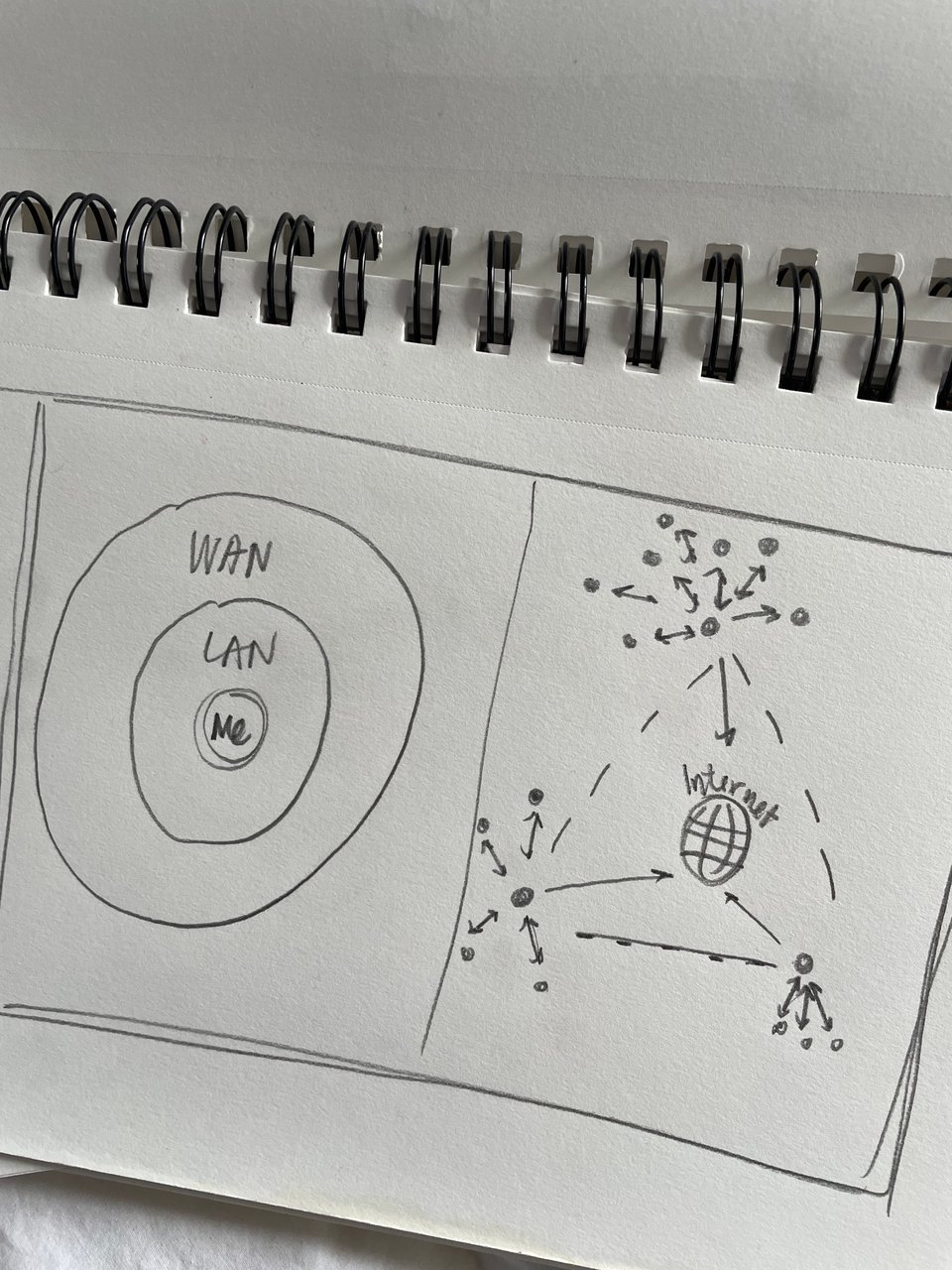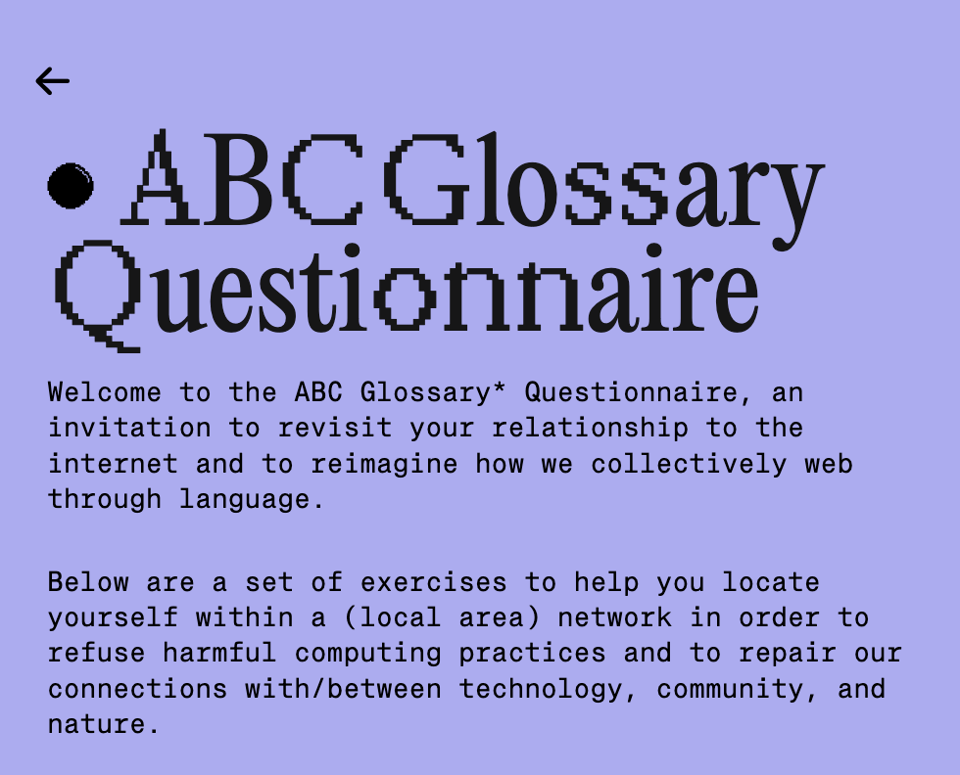l is for local area network (LAN)
each issue of new terms & conditions is an entry toward building abc glossary — a glossary for an anti-colonial black feminist critical media ecology. contribute your own new term & condition at abcglossary.xyz to be part of this project.
By definition a local area network (LAN) is a “collection of devices connected together in one physical location, such as a building, office, or home. A LAN can be small or large, ranging from a home network with one user to an enterprise network with thousands of users and devices in an office or school.”1
in my home i have a router, connected by cable and wires plugged into the wall. This setup creates an access point through which to connect to the internet. my laptop, my iphone, ipad, and the devices of my partner all connect — unless otherwise interrupted — to the wireless fidelity (wifi) in our home.

each store fragments of our digital lives — photos, text messages, social media accounts, and data clouds — streaming in sync to form my LAN. this also includes other devices that request access to the internet like wireless computer printers, security cameras, and “smart” refrigerators and thermostats. Research hubs at universities and labs led to the increasing demand for LANs in the 1960s.2 these were physical spaces that recognized a centralized need for collective information-gathering, curiosity, and knowledge exchange.
LANs have become a locus for our (digital) connection, and one of the ways we can make visible our (now largely wireless) interdependencies. as the definition offered earlier notes, LANs exist across a multitude of spaces where a collection of devices are gathered.
what interests me are the ways that the definitions and diagrams of LANs neatly illustrate these connections between devices absent of humans. in the relationships across our local area networks, it would appear that we neither play a part nor have a responsibility within our LANs. drawing these hard lines between humans and technology, ignore community as one of our earliest forms of technology and as essential to our networks. networks of mutual aid that provide healthcare, childcare, and financial support are examples of technologies of care within a local area network (or wide area network, also known as a WAN).

this inclusion of human agency and responsibility bears questions like…
→ who are we connected to even when we are seemingly wireless?
→ how can we activate the LAN as a care technology?
→ how do we tend to the specific needs of our LANs?
one of the exercises available in the anti-colonial Black feminist critical media ecology (abc) questionnaire invites you to place yourself within your LANs — to begin to map the links between each other. capitalism and white supremacy demand that we don’t see ourselves as part of a network, but rather as individual routers and devices on privatized networks (monopolized by internet service providers, also known as ISPs). as a response to this monopolization, technologies of care have birthed mesh networks that keep us tethered to community.3

the slippage between saying “LANs” and “lands,” is also not lost on me and is one that brings me joy. i’ve long thought of our digital realm as a kind of geography that exist between our platforms and user profiles. the anti-colonial Black feminist critical media ecology i am building is a framework to think through language and meaning, as both intimately situated in place and a lens through which to map what is possible.
by my definition, a LAN is created wherever community is gathered — mapping the wide webs that connect us together even when we feel worlds apart. we are responsible to our LANs/lands.
related: server
Footnotes
Local Area Network, Wikipedia
for more on internet access and mesh networks, listen to “The Future of the Final Mile,” ep 481, 99% Invisible, and watch this video on the amazing work of the Detroit Community Technology Project
Add a comment: